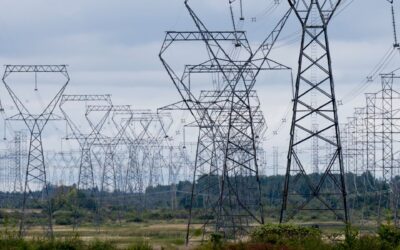In June, the Canadian Climate Institute released the first major assessment of how the shift from fossil fuels to clean energy will impact gas networks in Canada and the households that rely on them. Our Heat Exchange report finds that continuing with the status quo of expanding Canada’s gas network, and treating gas as the default option to heat new buildings, risks leaving future ratepayers on the hook for expensive and unnecessary infrastructure. Governments and regulators can best protect ratepayers through more prudent, realistic treatment of the risks of continued gas network expansion.
The Canadian Gas Association—the voice of Canada’s gas distributors—recently published a response to our report that mischaracterizes some of our conclusions and challenges others. We welcome the opportunity to address the Association’s concerns and set the record straight where required.
What we found
1. Shifting the balance of how Canadians heat buildings is not an all-or-nothing endeavour, and it won’t happen all at once.
Contrary to the Canadian Gas Association’s claim, our proposed approach is incremental, prudent, and economically sensible. Our report does not recommend that governments move abruptly to ban gas heating, as the Canadian Gas Association incorrectly states. Instead, we propose that provincial governments protect consumers by enabling better energy system planning—in particular, by no longer treating gas system expansion as the default option, and by equipping regulators to consider alternatives. Provincial governments and municipalities could also require new buildings to be energy efficient and fully electric, thus avoiding the construction of costly new gas distribution infrastructure.
Many places in Canada, including Quebec, Atlantic Canada, and the North, currently use little to no gas for home heating, relying more on other fuels or electricity. In provinces that use a lot of gas for heating, the transition from fossil fuels to cleaner alternatives will be gradual. If governments fail to prepare for and responsibly manage that transition, they leave utility regulators inadequately equipped to make prudent decisions to protect consumers. This failure to plan would exacerbate the risk of stranded assets, missed climate targets, or both.
2. Our report recommends that provinces plan ahead, and more prudently manage the risk of stranded assets.
In Heat Exchange, our main focus is protecting ratepayers, now and in the future. Our report makes a set of recommendations, in line with the Canada Electricity Advisory Council’s final report, on how governments can use their policy and planning tools to drive a transition that achieves climate goals, remains cost-effective, and is fair. There are numerous ways to update them to ensure regulators can make prudent, long-term investments and that systems are ready to cost-effectively meet the needs of consumers in the energy transition. They include directing regulators to consider the risk of stranded gas assets, and compare gas network expansion against alternatives; or reforming obligation-to-serve requirements so that further network expansion isn’t automatic.
All of our recommendations are focused on updating existing responsibilities held by governments and regulators, to suit the changing conditions of the energy transition. For example, in places with an existing network of gas pipelines, we recommend that provincial governments require gas utilities to provide maps of their networks to facilitate a managed transition that protects ratepayers over the long term. This information is badly needed: information on the age and condition of pipelines and the anticipated timing of gas infrastructure replacement is often unavailable. Having it would help provincial policymakers, regulators, and energy utilities identify opportunities to switch from gas infrastructure to cleaner alternatives that can mitigate the energy transition’s impacts on consumers’ utility bills.
Crucially, planning must ensure that low-income customers and seniors on fixed income are not the last customers left on the gas network, left to pay the costs of maintaining all remaining gas infrastructure—something Germans have memorably termed the “last grandma” problem.
Simply leaving the status quo untouched, according to market rules that were set in place long before commitments to cut carbon pollution became the norm in the global economy, and before heat pumps and other clean technologies existed, is not in the public’s interest.
3. Governments and regulators must protect Canadian households and businesses today and into the future—and that may clash with gas utilities’ current business models.
Gas and electricity utilities face more oversight than other companies because they’re natural monopolies. Provincial governments set the rules for how regulators make decisions about investments in gas and utility systems, and how shared infrastructure is paid for by users. Because utilities earn most of their profits on the infrastructure they build, this means they have a direct economic incentive to keep building—even if the long-term usage case for additional infrastructure is uncertain.
Consumers must live with and pay for those investment decisions for decades. Typically, ratepayers connected to gas infrastructure that’s built today will still be paying for that infrastructure 40 years from now—long after Canada and much of the world have committed to reaching net zero climate pollution. And existing ratepayers who have been connected for years aren’t necessarily off the hook, either. This is because the cost to build a gas pipeline is borne by all ratepayers, current and future, not just those that use the new infrastructure.
It’s the responsibility of energy regulators to make sure investments are fair and prudent for the long term. As more households and businesses switch from gas to highly efficient electric heat pumps, gas infrastructure, particularly the most recent investments, risks becoming a stranded asset, and current and future ratepayers risk being left holding the bag.
Continuing to default to gas for heating buildings limits choice and commits ratepayers to keep paying for fossil fuel infrastructure long into the future. Treating gas system expansion as the default may work well enough for incumbent gas utilities, but it threatens the long-term interests of ratepayers.
4. Full substitution of gas heating with low-carbon gases is not a realistic solution.
The Canadian Gas Association emphasizes hydrogen and biomethane as their answer to climate change—rather than electrification—but our research and numerous other studies find that low-carbon gases will never fully replace fossil gas, partly because of limited supply and partly because of cost.
Hydrogen generated with clean electricity is one of the gases that’s often mentioned. Its use in buildings, usually at a 5–20 per cent blend, is at an early stage of testing, and a switch from methane gas to pure hydrogen to fully replace fossil gas would require expensive upgrades in each home and business, and likely in distribution infrastructure. Biomethane, the other main alternative to fossil gas, is fully compatible with existing networks and equipment, but the feedstocks for making it are limited. Even under best-case supply scenarios, the most cost-effective application of scant supplies of valuable low-emissions gases are in heavy transport and industry, not building heat.
Banking on a future that relies on these alternative fuels being widely available and affordable, our research finds, is not realistic, and it risks higher overall costs to the economy and to consumers.
5. The status quo isn’t an option
Canada, alongside countries that represent 90 per cent of the global economy, has committed to reach net zero emissions by mid-century, to avoid catastrophic climate change and to stay competitive among its peers. Our analysis takes the commitment to net zero as the backdrop for energy and economic policy in Canada.
Responsible action on climate change requires that we do things differently. Buildings are one of the few sectors of the economy where emissions continue to climb, rather than drop. Shifting from fossil fuels to cleaner, highly efficient options like electric heat pumps is the most effective and cost-effective way to reduce carbon pollution from buildings. Failing to update policy to meet the changing context of the energy transition, on the other hand, risks keeping emissions from buildings high or locking in costly infrastructure that consumers might not need but will still have to pay for. Continuing with the status quo is not an option that serves the interests of Canadians.
Without government policy, the status quo will not change fast enough to align with climate goals. Governments and regulators hold significant responsibility in overseeing regulated utilities. They are entrusted with ensuring that infrastructure decisions are fair and prudent, since all ratepayers bear the cost of those investments.
Holding that responsibility in the context of an economy-wide energy transition requires updating provincial policy. It means planning for the future with energy roadmaps, switching the default mode from “unchecked expansion of gas pipelines” to “prudent consideration of all options,” and supporting households—particularly low-income households—through the transition.
The upshot
Our findings are clear: Continuing to expand gas infrastructure is a liability for both Canadians and the climate. To protect both, provincial governments must update how decisions are made about crucial energy infrastructure—gas and electricity networks first and foremost.
While Canadian gas distributors are understandably concerned about the risks of a net zero transition for their business model, governments and regulators must make decisions and enact policies that make sense for Canadians overall.
Accelerating the transition to clean, affordable energy is both a necessity and a complex challenge that merits robust, evidence-based discussion. The Canadian Climate Institute is proud to advance this discussion by undertaking research in the public interest and proposing policy solutions. To learn more about our research, including more detail on our modelling assumptions and results, explore our complete findings here.








